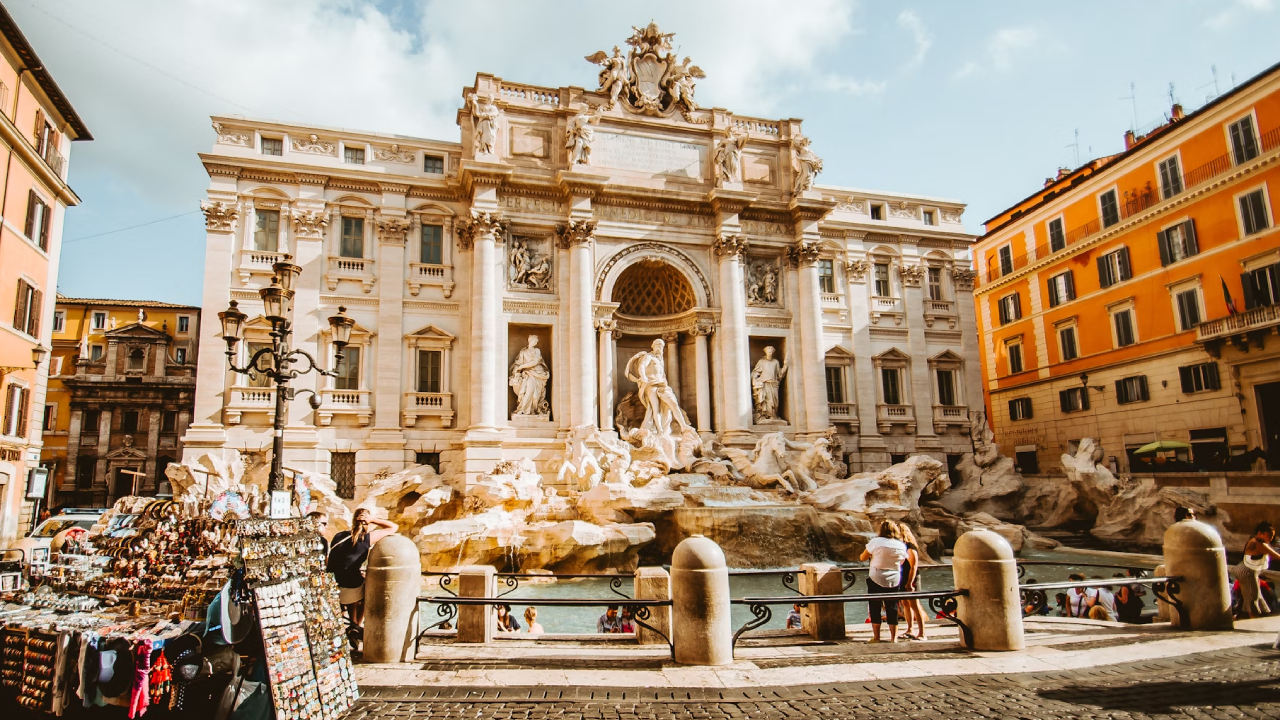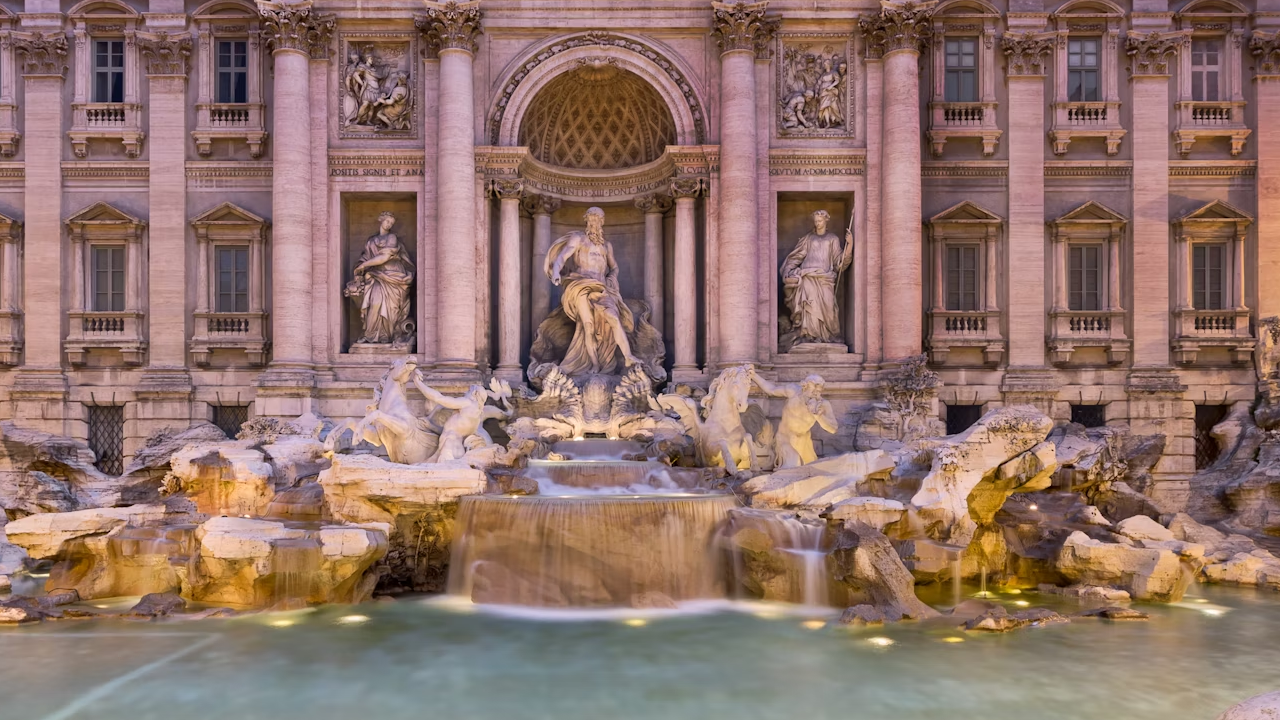Rome, a city teeming with history, art, and culture, is home to some of the most iconic landmarks in the world. One of these, the Trevi Fountain, stands as a symbol of artistic magnificence and is a must-see destination for millions of tourists each year. Yet, with its global fame comes a burden—overcrowding and the potential for damage to this fragile masterpiece. In response, city officials have recently proposed an entry fee as part of a broader effort to protect the fountain and manage the increasing flow of visitors.
While the plan has sparked debate, it reflects a growing concern about the preservation of historical landmarks in the age of mass tourism. In conjunction with the proposed fee, the fountain is also set to undergo restoration work ahead of the Vatican’s Jubilee in 2025, aiming to ensure its longevity for future generations.
Table of Contents
The Trevi Fountain: A Historical and Cultural Landmark
Built in the 18th century, the Trevi Fountain, or “Fontana di Trevi” in Italian, is an architectural masterpiece designed by Nicola Salvi and completed by Giuseppe Pannini. It represents one of the largest Baroque fountains in the world and is renowned for its grandeur and intricate design. The central figure of the fountain is Oceanus, the Greek god of the sea, who is depicted riding a shell-shaped chariot drawn by two sea horses, each representing different moods of the sea—one calm, the other restless. The surrounding sculptures and the cascading waters create a dramatic and immersive visual experience that has captivated visitors for centuries.
But beyond its artistic value, the Trevi Fountain has a deep cultural significance. The tradition of tossing a coin into the fountain, immortalized in films such as La Dolce Vita and Three Coins in the Fountain, is believed to ensure a return trip to Rome. Every year, an estimated 1.5 million euros are thrown into the fountain, with the proceeds going to local charities, adding a layer of philanthropy to the tourist ritual.
Yet, this iconic status has also made the Trevi Fountain a victim of its own popularity. With millions of visitors descending on the site each year, the fountain has become a hotspot for overcrowding, vandalism, and general wear and tear.

The Proposed Entry Fee
In light of these challenges, Rome’s city officials are considering the introduction of an entry fee for visitors wishing to approach the Trevi Fountain. The fee, while still in the proposal stage, aims to address two key issues: reducing overcrowding and protecting the fountain from potential damage.
Alessandro Onorato, Rome’s city councilor for tourism, emphasized the need for proactive measures to manage the surge in visitors. In a statement to the Associated Press, he remarked, “We have to avoid, especially in a fragile art city like Rome, that too many tourists damage the city. We need to safeguard two things: that tourists don’t experience chaos and that citizens can continue to live in the center.”
This proposal aligns with broader global trends in tourist management, particularly in cities and sites struggling with over-tourism. From Venice implementing entry fees to manage the overwhelming flow of cruise ship tourists, to Machu Picchu limiting the number of daily visitors, iconic destinations around the world are grappling with how to balance accessibility and preservation.
In the case of the Trevi Fountain, an entry fee could provide much-needed funds for maintenance and conservation, while also helping to control the number of visitors at any given time. However, it also raises questions about accessibility, with some critics arguing that the fee could limit access to a public monument that has traditionally been free to all. The potential for exclusivity, even at a modest price point, is a concern for those who view the fountain as part of Rome’s shared cultural heritage.

Balancing Preservation and Accessibility
The debate over the entry fee touches on a larger issue that many historic cities face: how to preserve cultural landmarks while keeping them accessible to the public. On one hand, charging for access could generate revenue to fund the maintenance and restoration efforts needed to protect the Trevi Fountain for future generations. On the other hand, some fear that such a fee would commercialize a site that has long been a free, open space for Romans and tourists alike.
Critics argue that turning the Trevi Fountain into a “pay-to-see” attraction undermines its role as a public monument. The fountain, located in Piazza di Trevi, has historically been an integral part of the urban fabric of Rome. Charging for access could transform it into a more commercialized experience, potentially alienating locals and making it more difficult for everyday Romans to enjoy the space they have long considered their own.
Proponents of the fee, however, believe it is a necessary step in the face of growing tourism and the strain it places on Rome’s infrastructure. With the city experiencing an influx of millions of tourists each year, measures to control the flow of visitors and protect historical sites are seen as vital to maintaining the city’s cultural and architectural integrity.
Moreover, the fee may not be prohibitively high—officials have floated the idea of keeping the cost low enough to deter over-crowding without deterring genuine tourists. In this context, the fee is seen as a pragmatic solution, striking a balance between preservation and accessibility.
Upcoming Restoration. Enhancing the Visitor Experience
The proposed entry fee coincides with plans for a significant restoration of the Trevi Fountain, scheduled to begin in November. This restoration, which comes with a price tag of approximately $329,000, will prepare the fountain for the Vatican’s Jubilee in 2025, an event that is expected to attract even larger crowds to the city.
Rome’s mayor, Roberto Gualtieri, has also announced that a new horseshoe-shaped walkway will be constructed, allowing visitors to get closer to the statue of Oceanus and his chariot. This walkway will offer a unique, immersive experience that goes beyond the traditional vantage points from the edges of the fountain. By enabling visitors to step into the basin, the city hopes to provide a more intimate encounter with the fountain’s stunning artwork, creating a deeper appreciation for its craftsmanship and historical significance.
The walkway and the restoration itself represent a commitment to both enhancing the visitor experience and ensuring the longevity of the fountain. The last major restoration took place in 2014, funded by the Italian fashion house Fendi, which highlights the ongoing need for both public and private investment in the upkeep of Rome’s historical treasures.